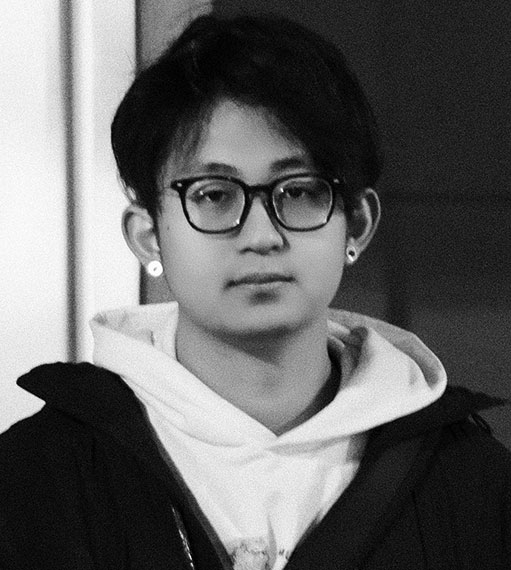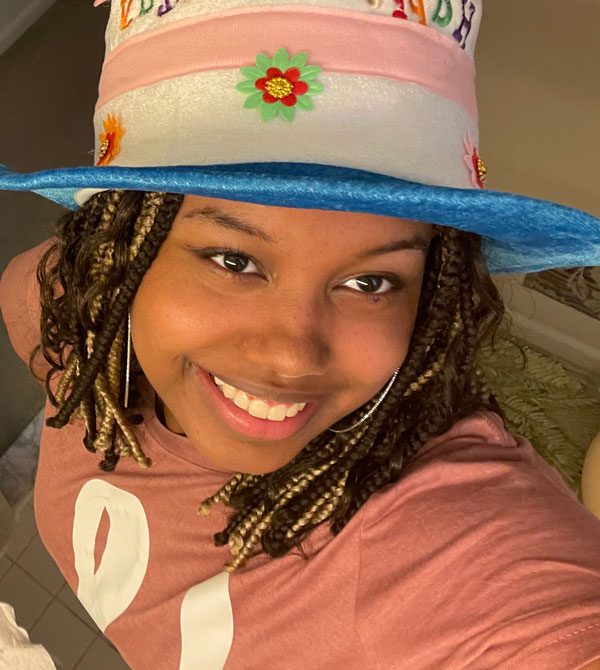

AP 2-D
Shanghai Rainbow Bridge International School|Shanghai, China
(ROBIN)
TOMONARI
KOHAMA

Dimensions: 4” x 11”|Materials: DJI Mavic 2 1/500 05.6 ISO 100 Photoshop|Processes: Used a drone, then combined 21 photos to make one large photo|Idea(s): This is the Milk Sea at Chuanxi, China|Curatorial Note: Power drone landscape photos that are so professional we checked on Tin Eye to see if this photo came up and it didn’t.
Student statement
Student statement
The titles of the chosen works are "The Art of Nature" and "The Burnt Sky." I decided to take the landscape picture to capture nature's and the city's beauty. The question that pushed me when I took these two photos is: How do you get out of your comfort zone in photography? It is easy to take one shot without thinking about it. Trying a new way different from what we used to do is stepping out of our comfort zone in photography. When we do it, we will start thinking about each photo we take. I chose multiple composites to achieve such a broad frame, which is very different from the single images I'm used to. If you stay in one style, you will stop making progress. You will have infinite possibilities by having the courage to explore and try new shooting methods.
I needed a more explicit goal at the beginning. I spent a lot of time exploring different styles and shooting techniques. I don't want my style to be fixed. It is essential to explore new styles constantly. One of my goals is to try styles and shooting methods that I have never tried before. For a long time, my scenery photos were similar to tourist photos. A big reason is that I am shooting but not thinking. Too many factors affect a photo, such as angle, light, height, equipment, weather, etc.
As I was thinking about it, I realized I had never imagined changing heights and angles. Most of the time, my photos were taken with a camera in my hand and always on the ground. I had never imagined a bird's perspective or a higher perspective. But for landscape photos, a higher and more accessible viewing angle is essential.
After that, I started learning to take landscape photos with a more accessible perspective. The learning process isn't smooth sailing. Initially, the quality of a single photo could not be compared with the camera, so I began to explore the synthesis of multiple images. This function has always been available, but it is tough to use it well. At first, the photos had strange edges or pictures that didn't seem to match. Also, a battery can only give me 20 minutes to create a photo, and it takes a lot of time to find a good angle and take pictures, so it takes a lot of work to take such images, but the output is excellent.
When developing a portfolio, I considered using different photos in selected work. It is tough to practice taking pictures like this because although I can practice daily, the weather is sometimes different. For example, when I was in Milk Sea, the weather changed quickly; the altitude was high, and the wind was strong. When shooting in Shanghai, not every day has such beautiful and unique weather, so the scenery shooting also involves luck, but I still got the photos I wanted to take. My art teacher, Mr. Howard, gave me much support and freedom. After discussion, he allowed me to use photography for my portfolio, which was a massive help to my creation. In the process of my creation, when I was not clear about my goals, my art teacher also helped me establish long-term and short-term goals, which had a significant impact on my subsequent shooting because I no longer tried aimlessly. At the same time, I would like to thank my friend Lu Xiaotian, my photography teacher. He supports me in every shooting and allows me to create better.
Suggestions for other students: wait for that unique photography style. Part of our learning is to keep trying. Once you stop trying new styles, you lose the opportunity for infinite possibilities. You may be more suitable for another style that you have never tried. When you are proficient in various shooting styles in photography, it is not too late to think about your style.
Dimensions: 3” x 9”|ldea(s): A rare sunrise in Shanghai, China. Combined the scenery at the bund with the burnt sky.|Materials: OJI Mavic 2 1 /15 f/2.8 ISO 100 Photoshop|Process(es): Took using my drone, then combined 21 photos into one large-sized photo.
I took these photos using my drone, then combined 21 photographs into one large-sized image.
Teacher statement
Teacher statement
Howard Tsung
At the beginning of the semester, I discussed with Robin how to integrate AP Art and Design projects with college coursework. As Robin aspires to study film in college, we decided to use photography to express his concepts and aspirations for art.
Photography seems easy these days when everyone has a smartphone and can take a picture anytime, anywhere, just by clicking a button. However, this also makes professional photography skills more valuable. Technically, we had to learn about optical principles, shutter techniques, and the application of various lenses and focal lengths. Regarding content, we had to develop a way to tell a story and organize logic. We repeated this process thousands of times to highlight our unique characteristics in various photos.
Robin was far ahead of his peers in terms of camera knowledge. I encouraged him to reflect on his life and ambitions in his work. We had deep communication on the narration and creativity of the work. During the process, I felt his strong ambition. After devising a production strategy, we accumulated nearly a thousand pieces of work. In submitting the final work, we had many sparks of inspiration. Robin was happy to listen to everyone's opinions while rationally sticking to his ideas. I hope that there will be more opportunities in the future for his other outstanding works to be seen by everyone.
关于我的学⽣Robin Kohama的作品陈述
关于我的学⽣Robin Kohama的作品陈述
在学期开始的时候,我与Robin讨论了⼀下,如何将AP艺术的作品与⼤学课程相结合的事情,由于Robin即将在⼤学就读电影专业,因此我们决定以摄影的⽅式来表现他对于艺术的概念与渴望。
摄影似乎很简单,在这个时代⾥每个⼈都有智能⼿机,只要想做的话随时随地顺⼿拿起⼿机,打开摄像机,“咔擦”就是⼀个照片。然⽽这也使得具备专业的摄影能⼒变得更为可贵;技术上我们要学习、光学原理、快⻔技术、各种不同镜头与焦距的应⽤,内涵上我们要锻炼⼀个能够把故事说好的⽅式以及组织逻辑,如此反复成千上万遍,才会在各种照片⾥凸显出⾃ ⼰与众不同的特点。
比起同龄的学⽣,Robin对于相机操作的常识是遥遥领先的,我⿎励他在作品的呈现上试着来反映他的⽣活以及追逐梦想的野⼼。我们对于作品的叙述以及创意的表现上有着深层次的交流,在过程中,我感受到他强烈的企图⼼,在制定好制作策略之后我们累计了近千张的作品。我们在最终作品提交的过程中产⽣很多火花,Robin乐于倾听⼤家的意⻅,也对于⾃⼰的想法理性地坚持。希望未来仍然有更多的机会,让他其他的优秀作品进入⼤家的视野。
(Robin) Tomonari Kohama





